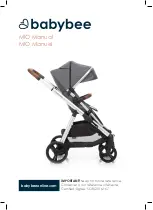
Storage environment:
-20
℃
~60
℃
0%~80%
Operational temperature:
-10
℃
~40
℃
Radio protocol:
Z-Wave Plus
Radio frequency:
868.42 MHz (EU)
908.42 MHz (US)
921.42 MHz (ANZ)
Range:
More than 150m outdoors
About 40m indoors (depending
on building materials)
Dimensions:
90*25*11mm
Ⅱ
. INSTALLATION
The stick can act as a secondary controller within an existing Z-Wave network after the
terminal program being installed. You can also use the stick to make a new Z-Wave network.
As the device exports a USB CDC/ACM class compliant interface, it appears as a serial port,
reusing existing standard drivers on most popular PC operating systems. As such there is no
vendor driver required.
1. Windows 2000/XP/Vista/7/8 32 & 64 bit
UZB.INF & UZB.CAT are provided in the Z-Wave SDK that reuses the standard Windows
usbser.sys or usbser64.sys driver. The device appears in the Device Manager under the
Ports section, and is accessible through the Windows CreateFile API by applications as
“//.//COMxxx” where xxx is the COM Port number assigned by the OS.
2. Linux kernel 2.6.24+
The device appears as “/dev/ttyACMxx” where xxx is the tty number assigned by the OS.
3. MAC OS X 6.4
The device appears as “/dev/tty.usbmodemxxx” where xxx is the tty number assigned by
the OS.
Ⅲ
.INDICATOR
4.
The LED indicator on the Stick will keep being on when it’s successfully connected to the
host.
5. The LED Indicator will blink once when the stick is sending a Z-Wave command.
Ⅳ
. INCLUSION AND EXCLUSION / LEARN MODE
1. Stick can add or remove any Z-Wave devices.
2. Plug the stick in
to the PC’s USB port, start PC Controller and then it can add or remove Z-
Wave devices.
V. ASSOCIATION COMMAND





















